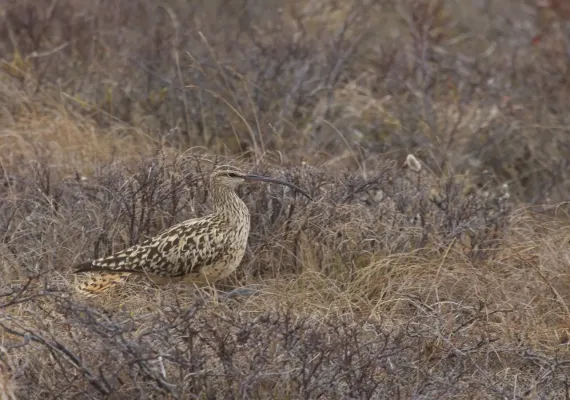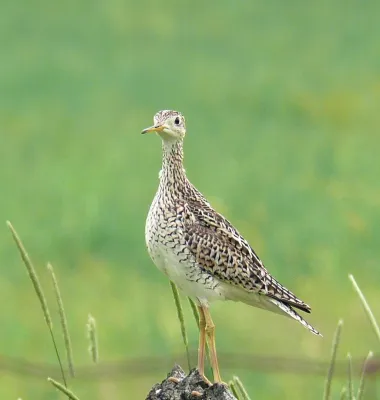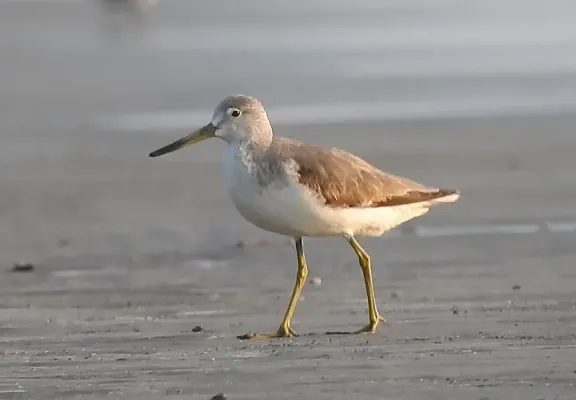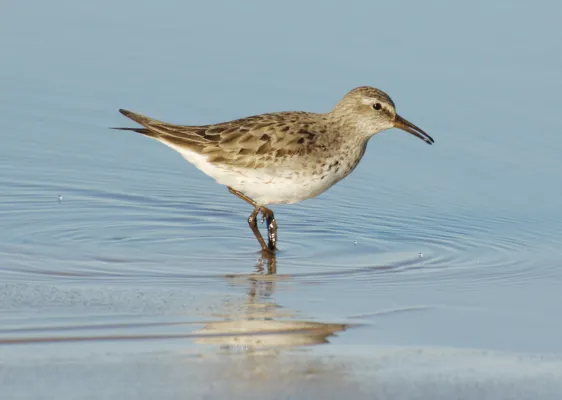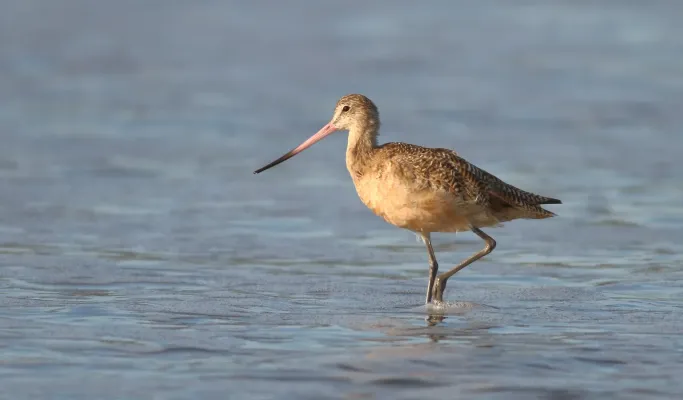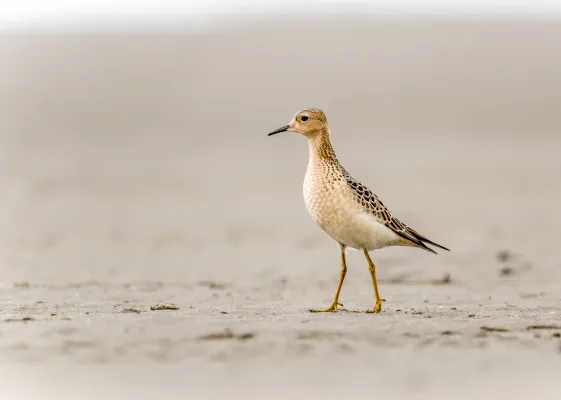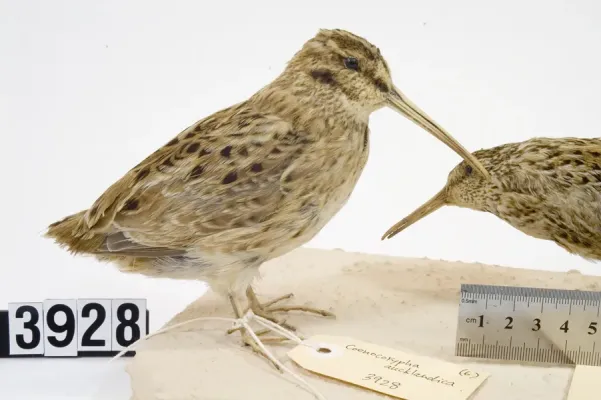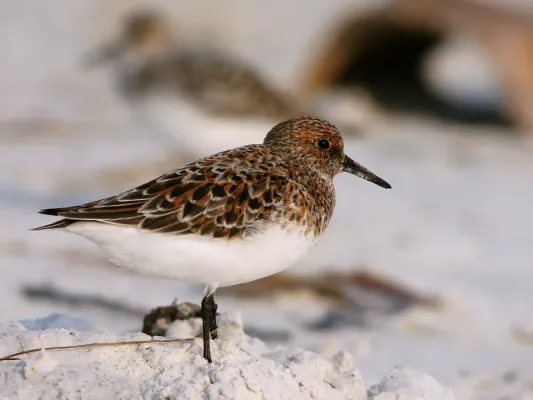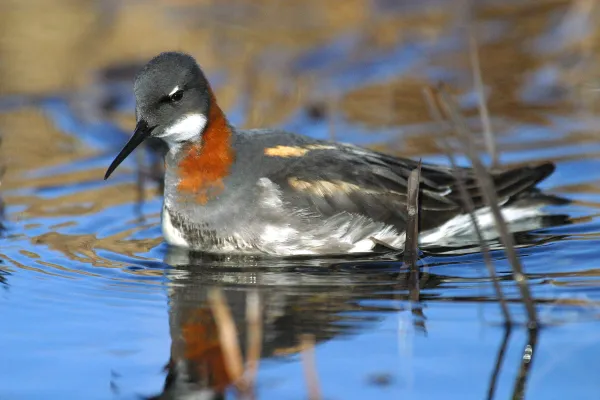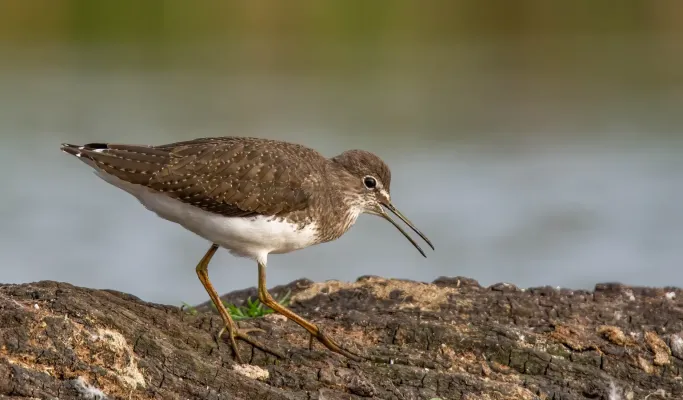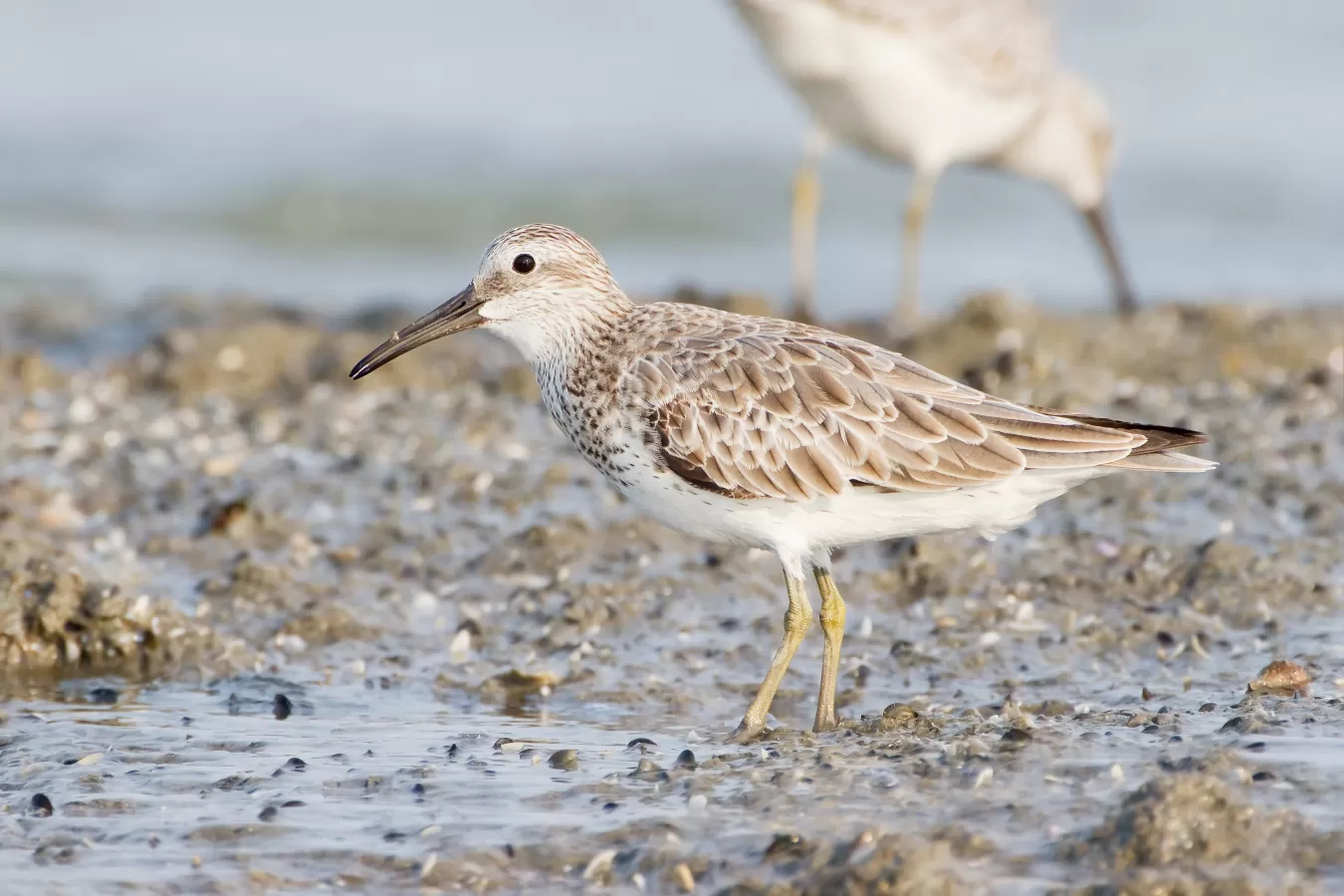
Great Knot
Great Knot
95
2 hours ago
Not yet spotted on Fladder
Spotted
The Great Knot, Calidris tenuirostris, is a large and robust shorebird belonging to the sandpiper family. Renowned for its extraordinary long-distance migrations, this species traverses vast distances between its Arctic breeding grounds and non-breeding coastal areas, primarily in Australasia. It is a key species for monitoring the health of the East Asian-Australasian Flyway.
Where to spot
During migration and in its non-breeding season, the Great Knot is predominantly found on extensive coastal mudflats, sandy beaches, estuaries, and sometimes rocky shores. They often congregate in large flocks, frequently associating with other shorebird species. Its breeding grounds are in the high Arctic tundra of northeastern Siberia, where it prefers drier, rocky uplands.
How to spot
To spot the Great Knot, look for large, often dense, flocks of waders on coastal intertidal zones, especially at high tide roosts or during receding tides when they actively forage. Observe their distinctive, rhythmic probing action as they search for food in the mud. Their call is a distinctive 'knip-knip' or a harsh 'kru-kru', especially when flushed. In breeding plumage, the striking chestnut and heavily spotted underparts are a key identification feature.
When to spot
The best time to observe Great Knots is during their non-breeding season (late Northern Hemisphere autumn to early spring) in coastal wetlands of Southeast Asia and Australasia, or during their spring and autumn migrations along the East Asian-Australasian Flyway. They are active throughout the day, often foraging during low tide and resting at high tide. The breeding period in the Arctic is short, from June to August, and observing them there is extremely challenging due to the remote locations.
Where to spot
During migration and in its non-breeding season, the Great Knot is predominantly found on extensive coastal mudflats, sandy beaches, estuaries, and sometimes rocky shores. They often congregate in large flocks, frequently associating with other shorebird species. Its breeding grounds are in the high Arctic tundra of northeastern Siberia, where it prefers drier, rocky uplands.
How to spot
To spot the Great Knot, look for large, often dense, flocks of waders on coastal intertidal zones, especially at high tide roosts or during receding tides when they actively forage. Observe their distinctive, rhythmic probing action as they search for food in the mud. Their call is a distinctive 'knip-knip' or a harsh 'kru-kru', especially when flushed. In breeding plumage, the striking chestnut and heavily spotted underparts are a key identification feature.
When to spot
The best time to observe Great Knots is during their non-breeding season (late Northern Hemisphere autumn to early spring) in coastal wetlands of Southeast Asia and Australasia, or during their spring and autumn migrations along the East Asian-Australasian Flyway. They are active throughout the day, often foraging during low tide and resting at high tide. The breeding period in the Arctic is short, from June to August, and observing them there is extremely challenging due to the remote locations.
The Great Knot undertakes one of the longest and most demanding annual migrations of any bird, often flying non-stop for thousands of kilometers across oceans between continents.
Loading...
Spotted
- Recently spotted
- 737 (Seen in the last 3 months)
- Last spotted
- 2 hours ago
Monthly observations
No observations
Loading...
Nothing spotted yet


